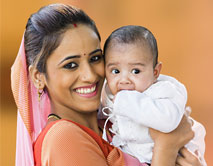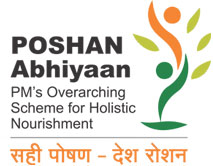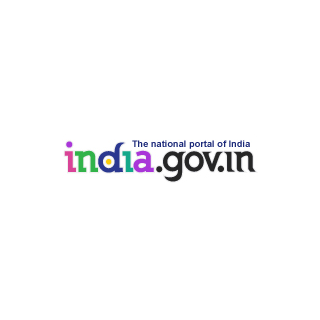
POSHAN Abhiyaan is a multi-ministerial convergence mission with the vision to ensure attainment of malnutrition free India by 2022. The objective of POSHAN Abhiyaan to reduce stunting in identified Districts of India with the highest malnutrition burden by improving utilization of key Anganwadi Services and improving the quality of Anganwadi Services delivery. Its aim to ensure holistic development and adequate nutrition for pregnant women, mothers and children.
The Ministry of Women and Child Development (MWCD) is implementing POSHAN Abhiyaan in 315 Districts in first year, 235 Districts in second year and remaining districts will be covered in the third year.
There are a number of schemes directly/indirectly affecting the nutritional status of children (0-6 year's age) and pregnant women and lactating mothers. In spite of these, level of malnutrition and related problems in the country is high. There is no dearth of schemes but lack of creating synergy and linking the schemes with each other to achieve common goal. POSHAN Abhiyaan through robust convergence mechanism and other components would strive to create the synergy.

- The POSHAN Abhiyaan, as an apex body, will monitor, supervise, fix targets and guide the nutrition related interventions across the Ministries.
- The proposal consists of
- mapping of various Schemes contributing towards addressing malnutrition
- introducing a very robust convergence mechanism
- ICT based Real Time Monitoring system
- incentivizing States/UTs for meeting the targets
- incentivizing Anganwadi Workers (AWWs) for using IT based tools
- eliminating registers used by AWWs
- introducing measurement of height of children at the Anganwadi Centres (AWCs)
- Social Audits
- Setting-up Nutrition Resource Centres, involving masses through Jan Andolan for their participation on nutrition through various activities, among others.
Guidelines
- Yoga Modules
- Jan Andolan Guideline for POSHAN Abhiyaan
- Guidelines for Implementation of Incremental Learning Approach (2018)
- Guidelines for Organising Community based events (2018)
Major Impact
The programme through the targets will strive to reduce the level of stunting, under-nutrition, anaemia and low birth weight babies. It will create synergy, ensure better monitoring, issue alerts for timely action, and encourage States/UTs to perform, guide and supervise the line Ministries and States/UTs to achieve the targeted goals.

- POSHAN Abhiyaan was launched by Prime Minister Shri Narendra Modi in Jhunjhunu, Rajasthan in March 2018.
- It targets to reduce level of under-nutrition and other related problems by ensuring convergence of various nutrition related schemes.
- It also targets stunting, under-nutrition, anaemia (among young children, women and adolescent girls) and low birth rate.
- It will monitor and review implementation of all such schemes and utilize existing structural arrangements of line ministries wherever available.
- Its large component involves gradual scaling-up of interventions supported by on-going World Bank assisted Integrated Child Development Services (ICDS) Systems Strengthening and Nutrition Improvement Project (ISSNIP) to all districts in the country by 2022.
Key Nutrition strategies and interventions
These are key Nutrition strategies and interventions IYCF (Infant and Young child feeding), Food and Nutrition, Immunization, Institutional Delivery, WASH (Water, Sanitation and Hygiene), De-worming, ORS-Zinc, Food Fortification, Dietary Diversification, Adolescent Nutrition, Maternal Health and Nutrition, ECD (Early childhood development)/ECCE (Early Childhood care and Education), Convergence, ICT-RTM (Information and Communication. Technology enabled Real Time Monitoring) and Capacity Building etc.

Implementation strategy would be based on intense monitoring and Convergence Action Plan right up to the grass root level. POSHAN Abhiyaan will be rolled out in three phases from 2017-18 to 2019-20. POSHAN Abhiyaan targets to reduce stunting, under-nutrition, anaemia (among young children, women and adolescent girls) and reduce low birth weight by 2%, 2%, 3% and 2% per annum respectively. Although the target to reduce Stunting is at least 2% p.a., Mission would strive to achieve reduction in Stunting from 38.4% (NFHS-4) to 25% by 2022 (Mission 25 by 2022).
Pillars of the Mission
- ICDS-CAS(Common Application Software)
- Convergence
- Behavioural change, IEC Advocacy
- Training and Capacity building
- Innovations
- Incentives
- Grievance Redressal
Related Links





